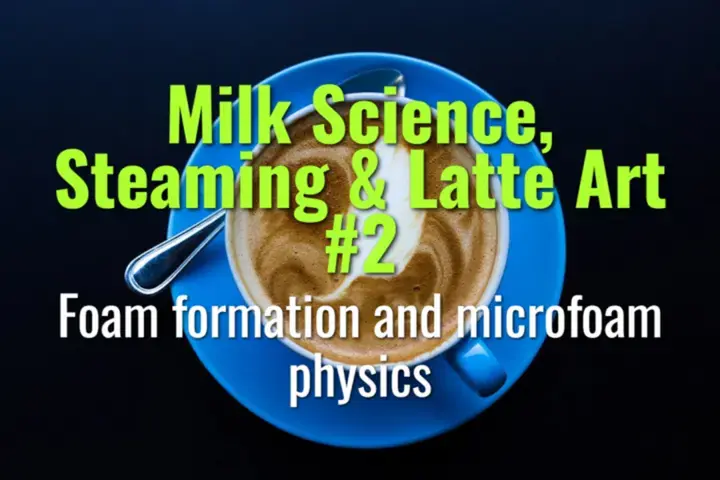Foam formation and microfoam physics
How milk foam is created during steaming, the physics of microfoam, and why it’s essential for latte art and texture.
- Coffee Basics Nerds
- 1 min read
Article 2 of 12 in Milk Science, Steaming & Latte Art/

Foam Formation Basics
- Process: Steam injects heat and air into milk.
- Proteins: Casein micelles and denatured whey proteins stabilize air bubbles.
- Result: A network of proteins around bubbles prevents collapse, creating foam.
Microfoam Physics
- Definition: Foam with very fine, uniform bubbles (<50 μm).
- Formation:
- Introduce small amounts of air early (stretching phase).
- Submerge wand tip deeper to fold milk (texturing phase).
- Key Factors:
- Proper angle and depth of steam wand.
- Adequate turbulence to break large bubbles into smaller ones.
- Texture: Creates glossy, paint-like milk with velvety mouthfeel.
Stability Factors
- Proteins: Stabilize bubble walls.
- Fats: Add creaminess but can destabilize foam if too high.
- Temperature: Ideal 55–65 °C (130–150 °F). Above 70 °C, proteins denature excessively, foam collapses.
Role in Latte Art
- Microfoam integrates with espresso crema.
- Fine texture allows precise pouring and defined patterns.
- Coarse foam leads to bubbly, unstable designs.
Summary
Milk foam forms as proteins trap air from steam, and microfoam is the refined version with fine, stable bubbles. Mastering microfoam physics is essential for silky texture, sweetness perception, and latte art performance.